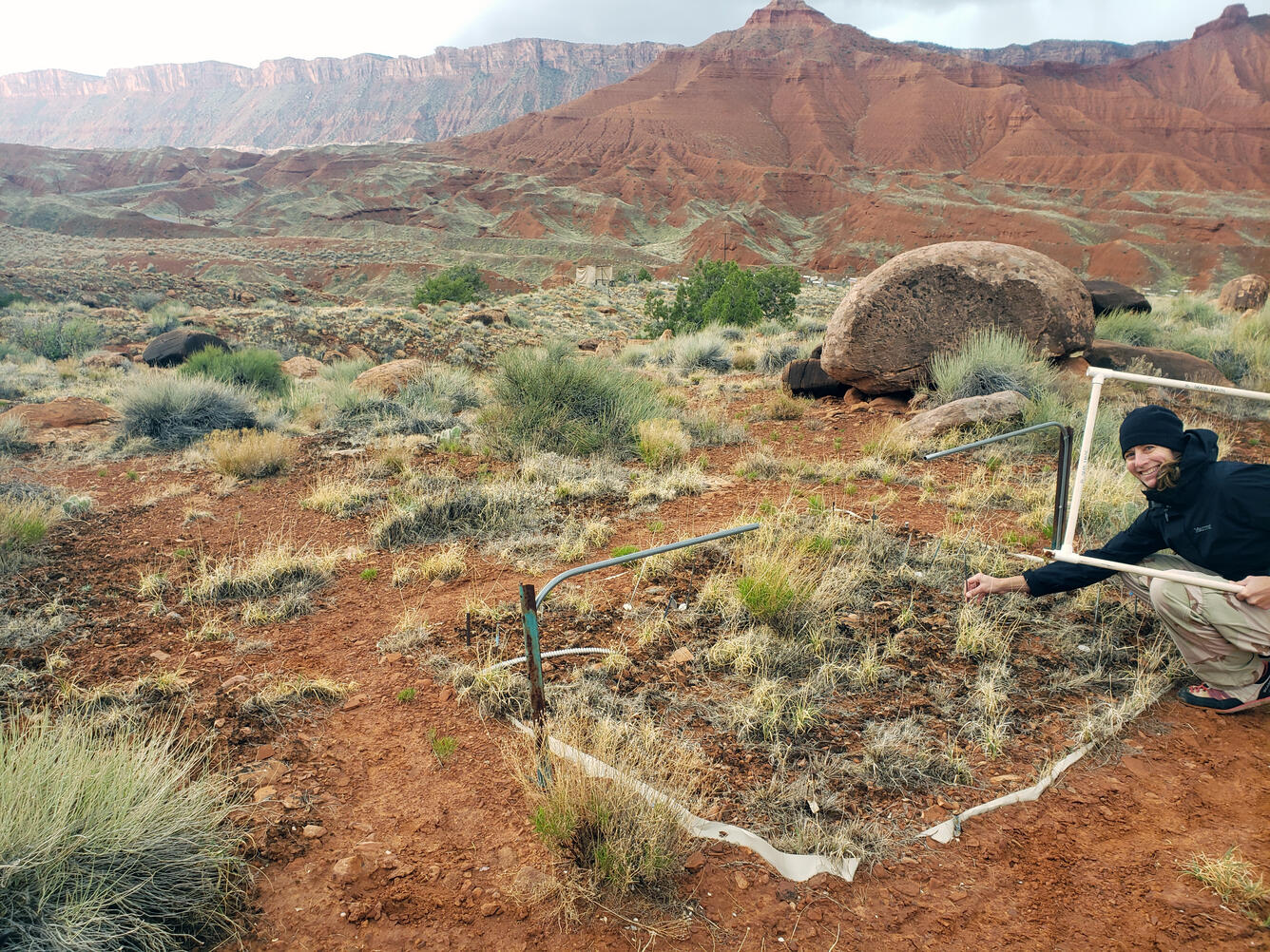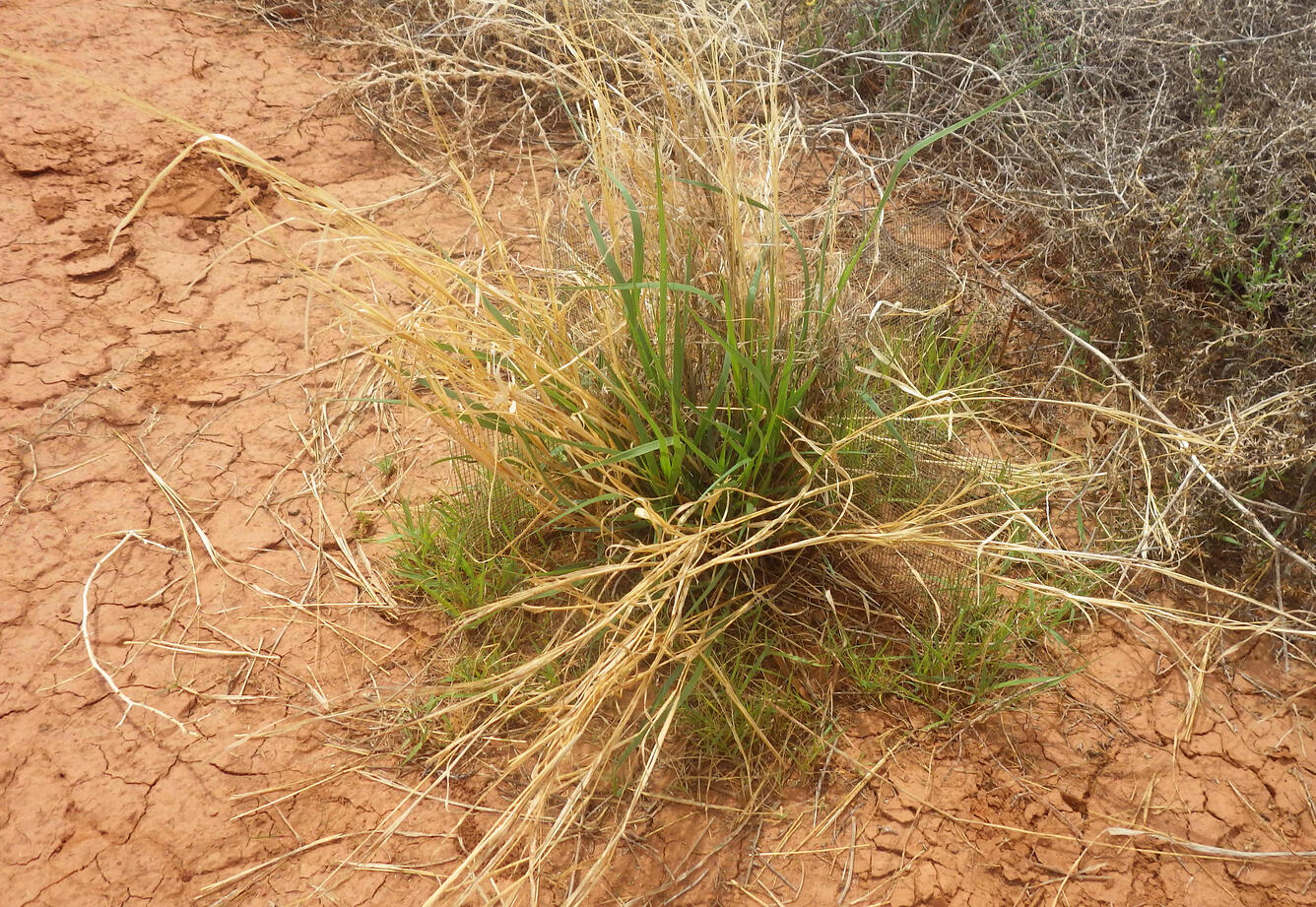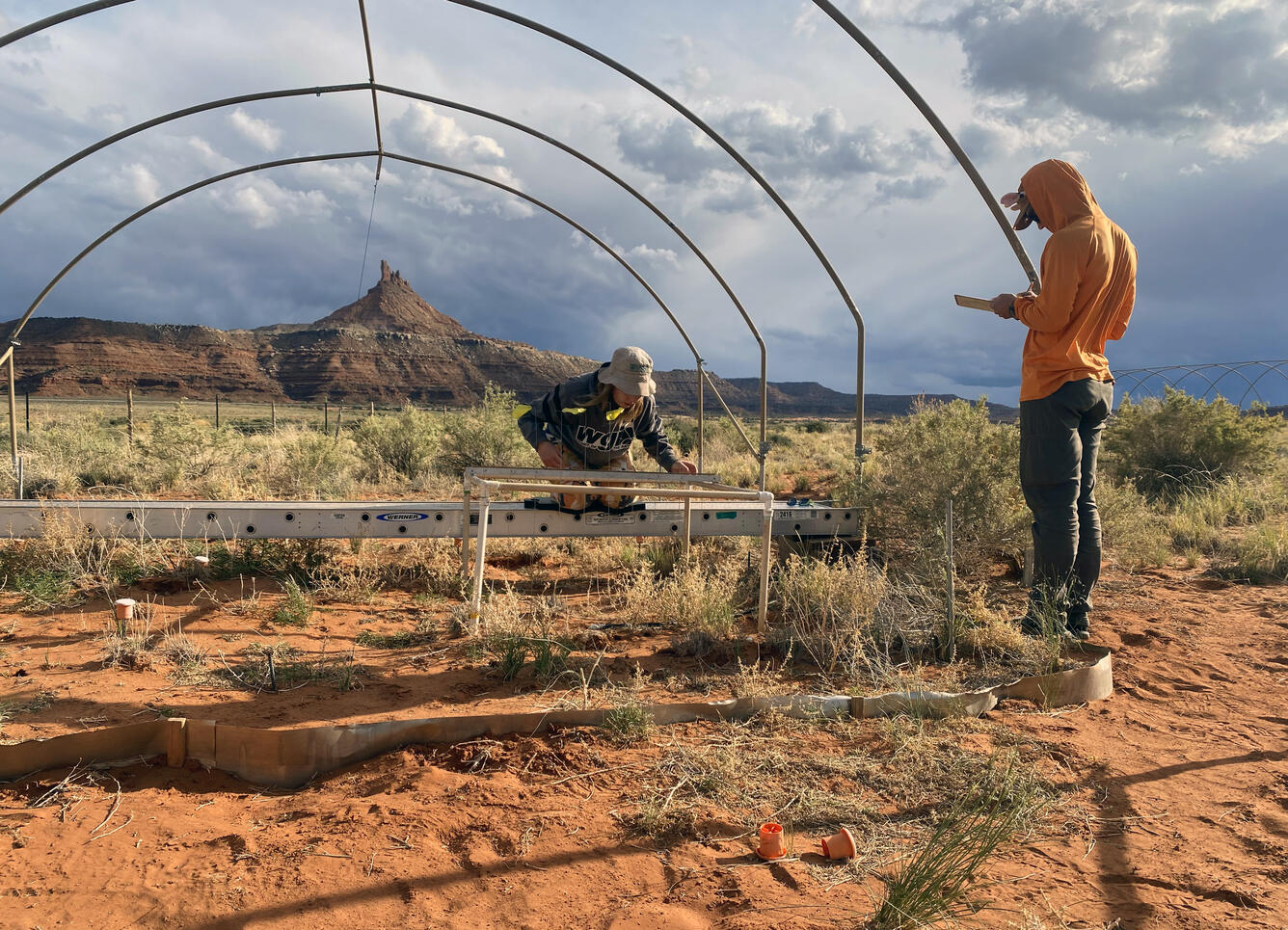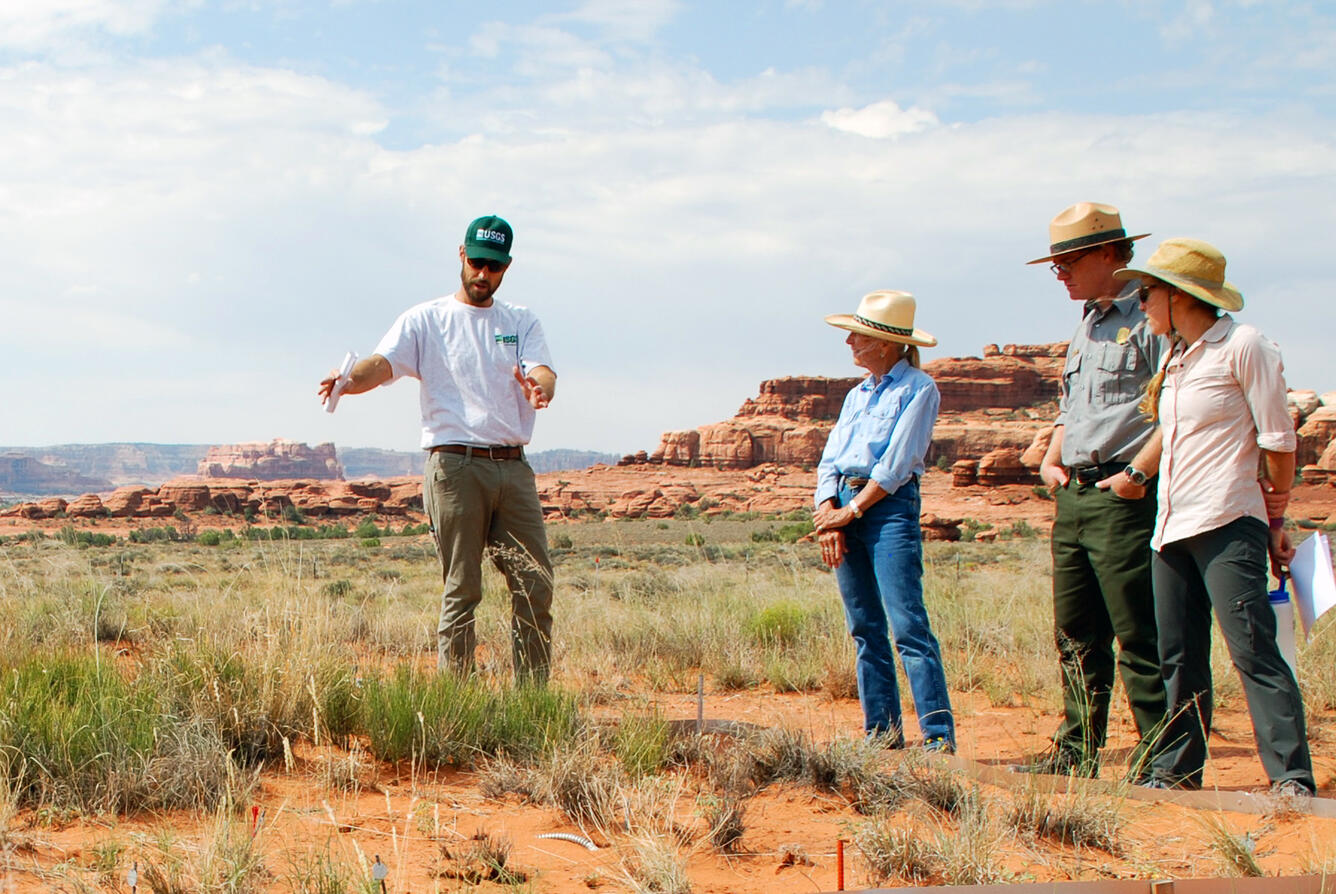The Changing Range: USGS initiatives support resilient ecosystems and economies on the Colorado Plateau
The USGS provides timely, scientific information about the health of ecosystems and economies, playing a crucial role in helping communities adapt to extreme drought.
USGS research allows NPS and BLM managers and ranchers to make informed planning decisions about current and future livestock stocking rates to maintain their livelihood and economic well-being.
Results from this research helps ensure that ranchers, recreationists, and public land stewards have the information they need to adapt and thrive in the face of increasing drought and changing land use.
The Colorado Plateau, known for its dramatic rock formations and hardy desert ecosystems, is facing increasing pressure from more frequent and severe droughts.
This iconic landscape supports rangelands where grasses, shrubs, biological soil crusts, and other plant and soil life are critical for ranching, tourism, and other culturally and economically important activities that Department of the Interior (DOI) lands support.
According to the Department of the Interior Economic Benefit Report, there were about 501 million visitors to DOI lands in fiscal year (FY) 2019. Total economic contributions from recreation on DOI lands supported about $60.6 billion in economic output and an estimated 469,000 million jobs.
Public land grazing leases created an estimated $2.22 billion in economic output and about 40,000 jobs.
In FY 2019 in Utah, recreation brought in $2.72 billion, creating 26,675 jobs. Grazing and timber generated $170 million, which created 4,444 jobs. In southeastern Utah, National Park visitors spent $397.6 million in local communities in 2023.
That spending supported 5,122 jobs in the region and had a cumulative benefit to local economies of $486.1 million.
Over the past two decades, the region has experienced three droughts so extreme they are considered 1-in-100-year events based on long-term climate records.
These conditions are placing stress on native plant communities and posing serious challenges for the ranching and tourism economies that rely on healthy, functioning lands.
To address these challenges, the U.S. Geological Survey (USGS), in collaboration with the National Park Service (NPS), the Bureau of Land Management (BLM), The Nature Conservancy (TNC), universities and others, are leading long-term research to understand how drought affects vegetation and landscape health in southeastern Utah and seeking adaptation strategies.
A series of USGS drought experiments have shown that grasses that typically emerge early in the spring (called “cool-season” grasses) struggle to survive in extreme drought conditions when compared to grasses that emerge later in the summer (warm-season grasses) or woody vegetation like shrubs.
These cool season grasses are particularly important because they grow early in the spring, protecting soils from erosion, and providing forage for livestock and wildlife. Researchers observed similar patterns from experimentally imposed seasonal droughts and in monitoring studies.
Seeking solutions to limit or adapt to negative impacts of drought is also an important aspect of the work USGS is conducting on the Colorado Plateau.
For example, USGS is working with NPS to test new restoration techniques to address drought-driven land degradation in Canyonlands and Arches National Parks, which together welcomed over 1.5 million visitors in 2024.
Across both national parks, staff aim to restore degraded grasslands by seeding and transplanting warm-season grasses and woody shrubs which are more likely survive future extreme droughts.
Researchers are also testing different simulated grazing strategies within drought experiments to assess how grazing timing or deferment may minimize drought impacts. This research helps identify when and where grazing should be adjusted based on grass availability and drought severity.
USGS also works with the TNC, the U.S. Department of Agriculture Agricultural Research Service (USDA-ARS) Jornada Experimental Range, New Mexico State University, Utah State University, and others, to test heritage cattle breeds that are potentially more adapted to the changing vegetation and warmer conditions brought on droughts on the Plateau.
These heritage breeds appear better suited to browse on woody vegetation and travel further from water sources to forage, which may make them a more ecologically and economically sustainable breed in a potentially hotter and less productive Colorado Plateau.
By providing timely, reliable science, USGS research supports long-term productivity of America’s public lands.
Findings from our research are shared with local and regional ranchers, NPS, and BLM through a variety of outreach events, including scientific and public presentations, work with University Extension specialists, field tours, and scientific publications.
By connecting scientific insight with on-the-ground decision-making, this research is helping DOI land managers and ranchers support thriving and resilient landscapes on the Colorado Plateau.


















